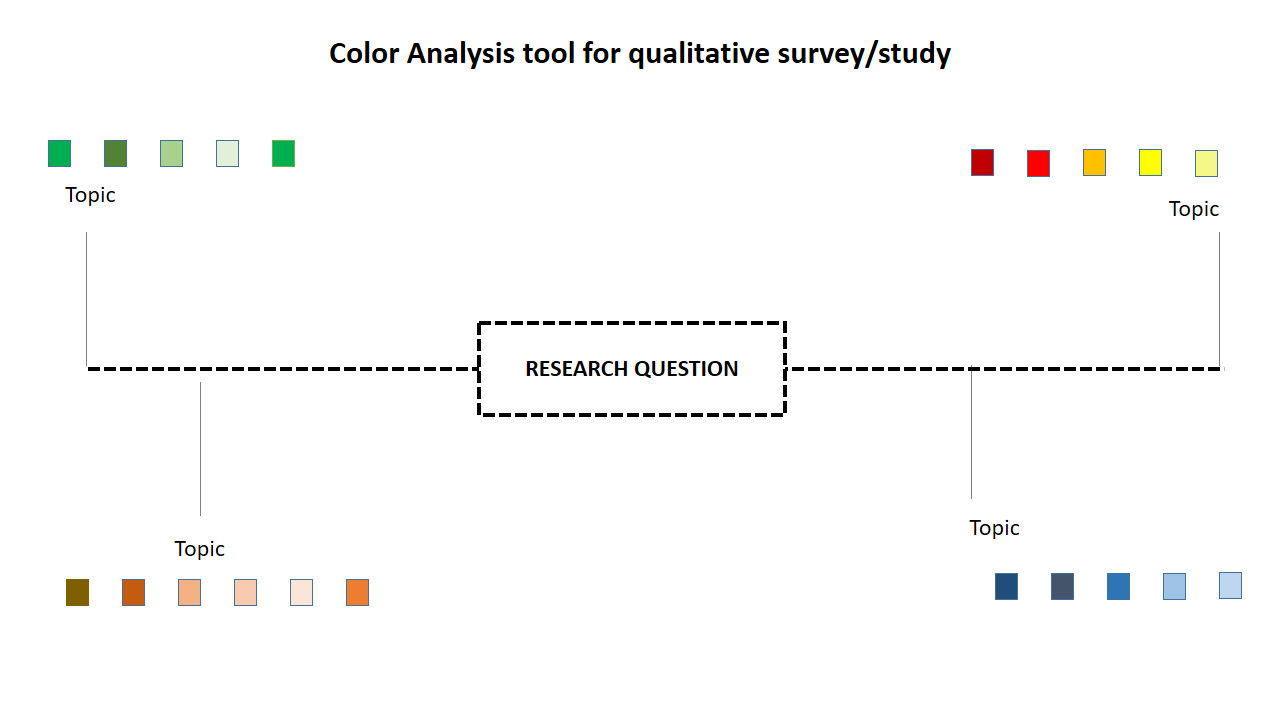Color Analysis Qualitative Study
Sponsored Link免费模板 保存,填空,打印,三步搞定!

Download Color Analysis Qualitative Study
(.pptx)- 本文档已通过专业认证
- 100%可定制
- 这是一个数字下载 (266.78 kB)
- 语: English
Sponsored Link
What is the best way to make a Color Analysis tool for a qualitative research study? Do you need a Color Analysis template for a Qualitative Study? This template will help you analyze the colors used in your Qualitative Study. Download this Color Analysis tool for a qualitative research study template that will perfectly suit your needs!
A Color Analysis Qualitative Study typically refers to a research approach that involves qualitative methods to explore and understand the role and impact of color in a particular context. This type of study aims to gather in-depth insights and subjective interpretations related to color, often in the fields of design, psychology, marketing, or cultural studies. Here are some key aspects of a Color Analysis Qualitative Study:
- Qualitative Research Methods:
- Interviews: Researchers may conduct interviews with individuals to explore their perceptions, associations, and emotions related to specific colors.
- Focus Groups: Group discussions can be employed to facilitate conversations among participants, allowing researchers to observe interactions and gather diverse perspectives on color.
- Observations: Researchers might observe how people react to color in real-life situations, such as in retail environments, workspaces, or homes.
- Contextual Exploration:
- Cultural Context: Researchers may investigate how cultural factors influence color preferences and interpretations.
- Environmental Context: The study might explore how color impacts individuals in specific environments, like workplaces, healthcare settings, or educational institutions.
- Emotional and Psychological Responses:
- Emotional Associations: The study may aim to uncover the emotional responses evoked by different colors and how these responses vary among individuals.
- Psychological Impact: Researchers may explore how color influences mood, perception, and behavior.
- Design and Marketing Applications:
- Product and Branding: In a business context, a Color Analysis Qualitative Study could be applied to understand how color choices in product design or branding impact consumer perceptions and preferences.
- User Experience (UX) Design: Research in the realm of UX design might focus on how color affects user engagement and satisfaction in digital interfaces.
- Interdisciplinary Approach:
- Collaboration: Such studies often involve collaboration between researchers from different disciplines, such as psychology, design, marketing, and sociology, to provide a holistic understanding of the subject.
Download this Color Analysis Qualitative Study template now and make it your own. You can customize it to fit your exact needs, add and remove elements, and change the font style. With this document, you can easily create a qualitative study that accurately captures your research.
DISCLAIMER
Nothing on this site shall be considered legal advice and no attorney-client relationship is established.
发表评论。 如果您有任何问题或意见,请随时在下面发布
相关文件
Sponsored Link

